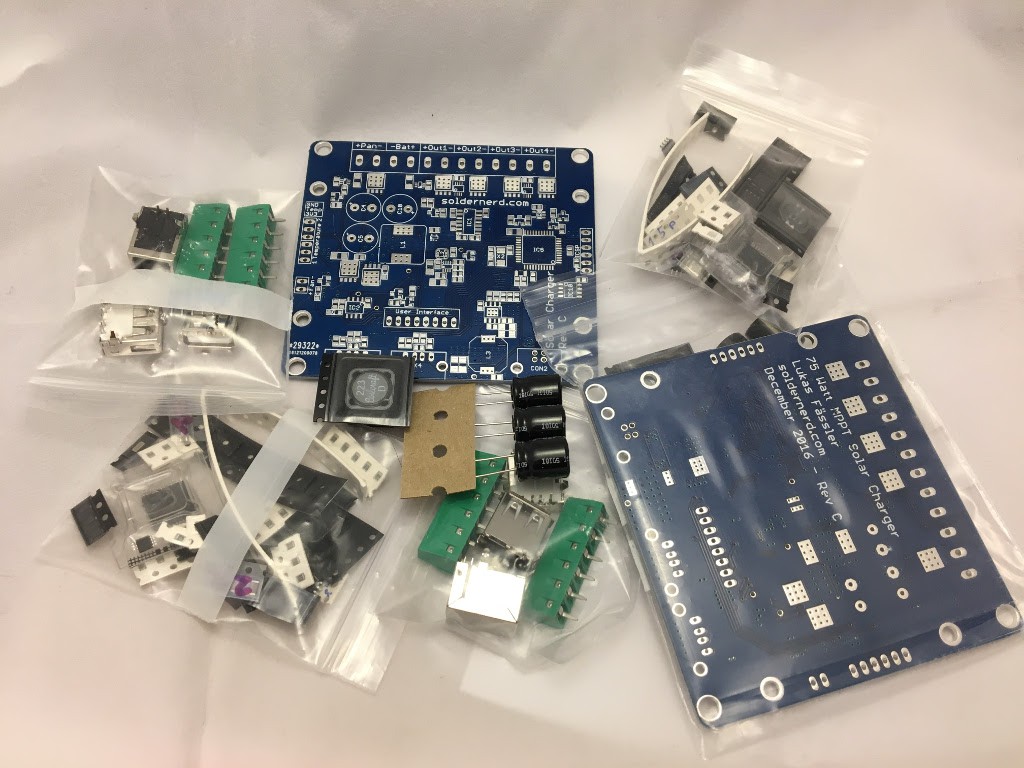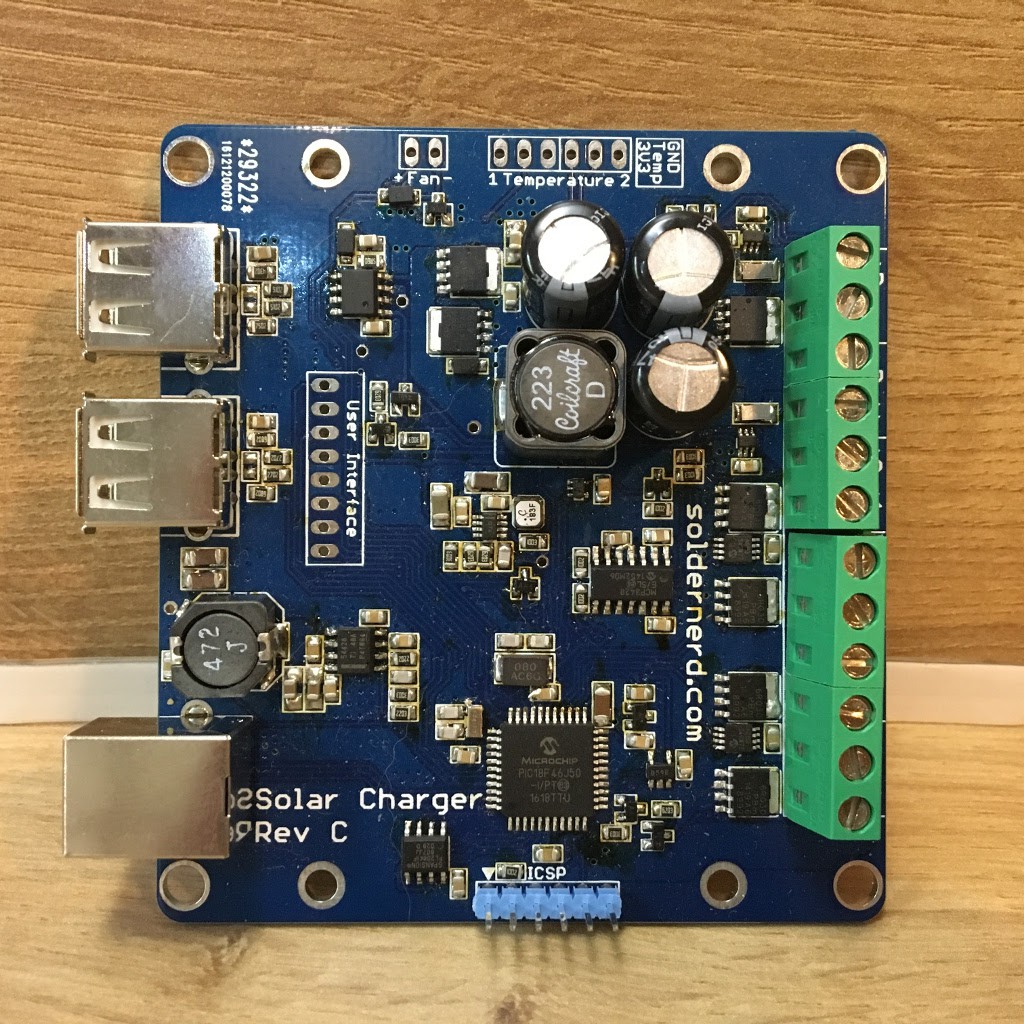In order to make MeshPoint mobile we need two things - batteries to keep it running, and battery management system (to charge the batteries, to keep batteries from under-voltage, to monitor power charging and power consumption and to manage power distribution).
Charging
For charging we needed battery management system that would charge from different power sources:
- solar power (with active MPPT algorithm)
- AC power (generator of from power grid)
- external DC power (car battery or AD/DC converter)
Monitoring and power management
Monitoring is extremely important because then we can decide how to manage power we have in batteries and power coming in from input (solar or other types of power). For example we plan to disable 1 or even 2 (out of 3) wifi radios in MeshPoint if power capacity drops below 50% and there is not enough solar power to charge batteries faster then they are being depleted. Also with enough data from last few previous days and weather forecast for next few days we can predict how much we can expect to get solar power generated and stored in batteries.
Battery chemistry
For batteries we needed ones that could perform very well in outdoor conditions (high and low temperatures), that are safe to handle and that have good power/weight ratio.
We decided against lead-acid batteries because they would make MeshPoint much less portable and most lead batteries are not designed to be operated at high and low temperatures during hot summers and cold winters.


Batteries based upon Li-ion and Li-polymer technology were also tested, and they have great capacity to weight ratio which made them almost ideal for making MeshPoint routers as light and as mobile as possible. Unfortunately these batteries are very dangerous when heated over 50°C (122F), if they get punctured they can easily catch fire and even explode. MeshPoint will be used in outdoor conditions, exposed directly to sun and needs to be rough handling during crisis events, so if we decided to pair MeshPoint with Li-ion batteries this could potentially make it quite dangerous.
Li-FePO4 battery chemistry
We decided to go with Li-FePO4 battery chemistry because they have really good weight to capacity ratio and can handle both high and low temperatures. Also if they are damaged or punctured they don't explode or catch fire, which is really important also. Li-FePO4 batteries are used in electric cars, scooters and bicycles there they are know for their good outdoor performance in wide temperature ranges. Only downside is that they are a bit more expensive, but because they are getting used more prices have also started to drop. Also one big advantage is number of cycles LiFePO4 have, which is usually few times more than other Lithium batteries and much, much better than Lead based batteries.
Most efficient MPPT solar charger
There are a lot of different solar chargers in the market which can be bought off the shelf, but we had specific requirements that none that we found could match:
- active MPPT solar tracking
- designed for LiFePO4 batteries
- power charge/discharge monitoring
- as light and as small as possible
- 5V, 12 and 24V outputs
- power management (turning off and on specific loads)
- open source and open hardware
- designed for 40W solar panels (most MPPT solar chargers are 100W and up)
- to be extremely power efficient
When we started MeshPoint project two years ago there were no open hardware solar MPPT projects, currently there are two besides one our design will be based upon:
MeshPoint battery management system and MPPT solar charger is based upon Soldernerd's (Lucas) open hardware MPPT solar charger project and firmware is also fully open source as well.


Some of modifications what will be done:
- removed screen to reduce size
- 24V output voltage
- smaller PCB design to make it more compact
- usb mini instead of full size usb connectors to make it more compact
- designed for 5S battery pack
- power management to turn off loads under low power situations
 Valent Turkovic
Valent Turkovic
Discussions
Become a Hackaday.io Member
Create an account to leave a comment. Already have an account? Log In.